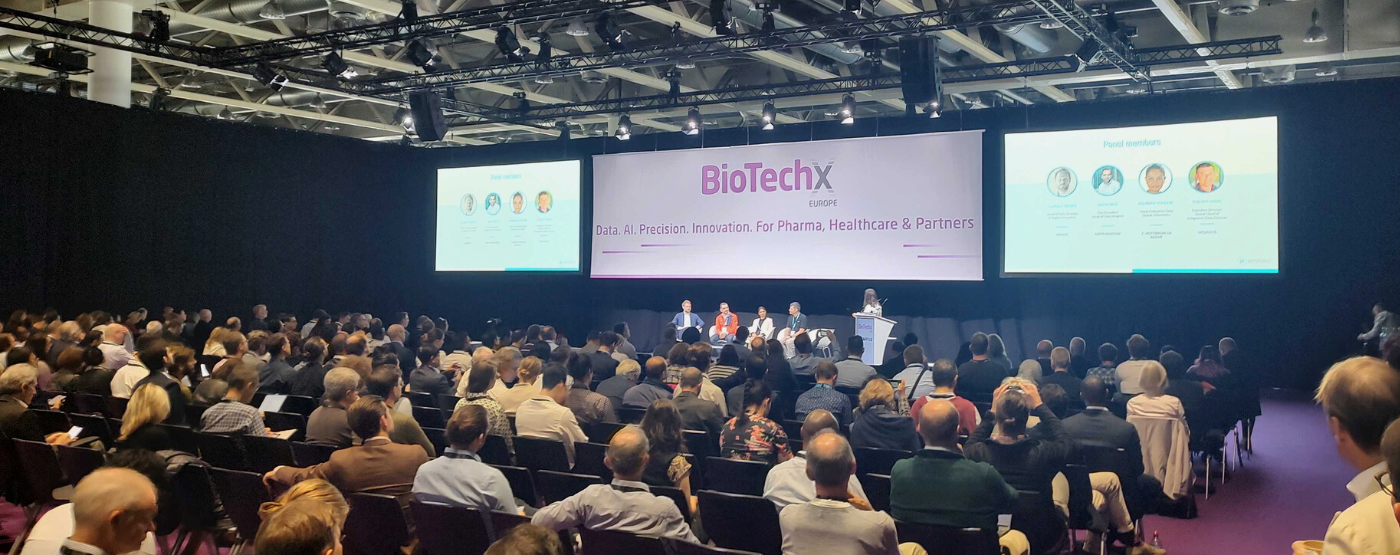
BLOG
This year at BioTechX Europe, ONTOFORCE had the pleasure of leading a panel discussion on data centricity, along with a presentation on innovative target identification with one of our customers.
BioTechX Europe is Europe’s largest biotechnology congress, bringing together pharma, academia, and clinicians to showcase innovation and foster meaningful collaborations across the field. This year, almost 3000 attendees came together in Basel for three busy days full of insightful discussions, impressive presentations, networking events and more. Amongst this busy time, ONTOFORCE had the pleasure of leading a panel discussion on data centricity.

ONTOFORCE’s Vice President of Solution Enablement, Bérénice Wulbrecht had the opportunity to moderate a discussion entitled “How are data-centric approaches transforming the life sciences industry?” featuring an esteemed panel of speakers:
Data is there to serve a purpose
There is a big top-down push to build out technology for data but first, an organization must consider, for what purpose, for which goals? These pieces of technology are only tools to solve a problem, they are not solutions within themselves. Succeeding with data centricity requires an organization to think about what can be generated with their data and what use cases can be addressed. Additionally, organizations need to consider the value case behind the technology they want to bring in, and how it can be used to create further benefits beyond immediate needs.
Culture comes first
When thinking about the FAIR (findable, accessible, interoperable, reusable) data principles, there is a propensity to start with interoperability and systems before thinking further.
However, adopting the FAIR principles involves firstly, establishing the proper culture in which FAIR can be implemented. Understand that politics and the culture these politics beget can be major threats to implementing FAIR properly.
Secondly, an organization needs to be paying attention to its processes. There need to be processes in place that not only enable appropriate governance and findability, but that also support the desired culture and encourage colleagues to fully leverage existing technology before implementing new technology and systems.
External data is key
Ironically, external data can be easier to access than internal data. Ultimately though, external data is crucial for success, but organizations need to be smart about which types of external data they are purchasing and the scale at which they buy. When considering which data to invest in, the key factors are price, quality, and timing.
Generative AI is still in its infancy
Generative AI is not just a hype; however, we are still in infancy with the technology and organizations need to consider what level of risk they are willing to accept when adopting and utilizing GenAI, especially large language models (LLMs). Additionally, while GenAI can help organizations solve problems, teams need to be able to articulate what the problem is in the first place rather than reverse engineering a solution to fit to a problem.
© 2025 ONTOFORCE All right reserved